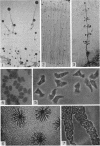Abstract
Hohl, Hans-Rudolf (University of Wisconsin, Madison) and Kenneth B. Raper. Nutrition of cullular slime molds. I. Growth on living and dead bacteria. J. Bacteriol. 85:191–198. 1963.—Methods for growing selected species of cellular slime molds in liquid culture on living and dead bacteria are described. Species investigated included Polysphondylium pallidum, P. violaceum, Dictyostelium discoideum, and D. purpureum. Maximal growth of myxamoebae occurred in suspensions of 1010 living bacteria (Escherichia coli B/r)/ml in Sörensen's phosphate buffer (pH 6.0), reaching a density of 107 to 2 × 107 cells/ml in 48 hr. The generation time for the different slime molds ranged from 2.4 hr for P. violaceum to 2.9 hr for D. discoideum (strain V-12). Good growth of P. pallidum occurred between pH 3.6 and 7.8. The slime molds grew less well on dead (autoclaved) than on living bacteria and, except for P. pallidum, the amount and rate of growth decreased markedly as the time of autoclaving was increased from 2.5 to 80 min. Bacteria killed with propylene oxide supported growth equal to those autoclaved for a few minutes. The myxamoebae were very sensitive to the osmotic pressure of the culture medium, especially in the presence of living bacteria, and addition of as little as 0.01 m NaCl caused a measurable decrease in slime mold growth. The culture techniques employed afford useful methods for investigating the nutritional requirements of the cellular slime molds, and the experiments described provide the bases for subsequent studies relating to the axenic cultivation of these singular microorganisms.
Full text
PDF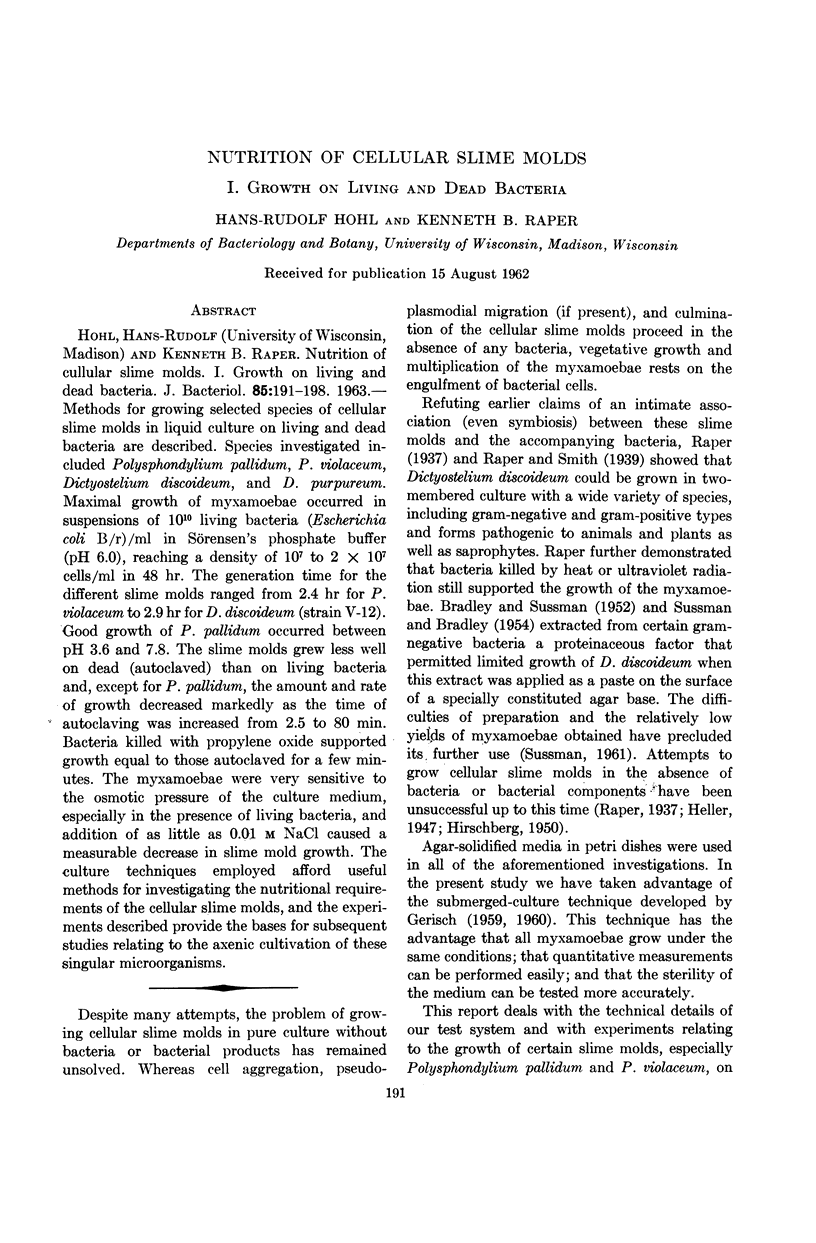
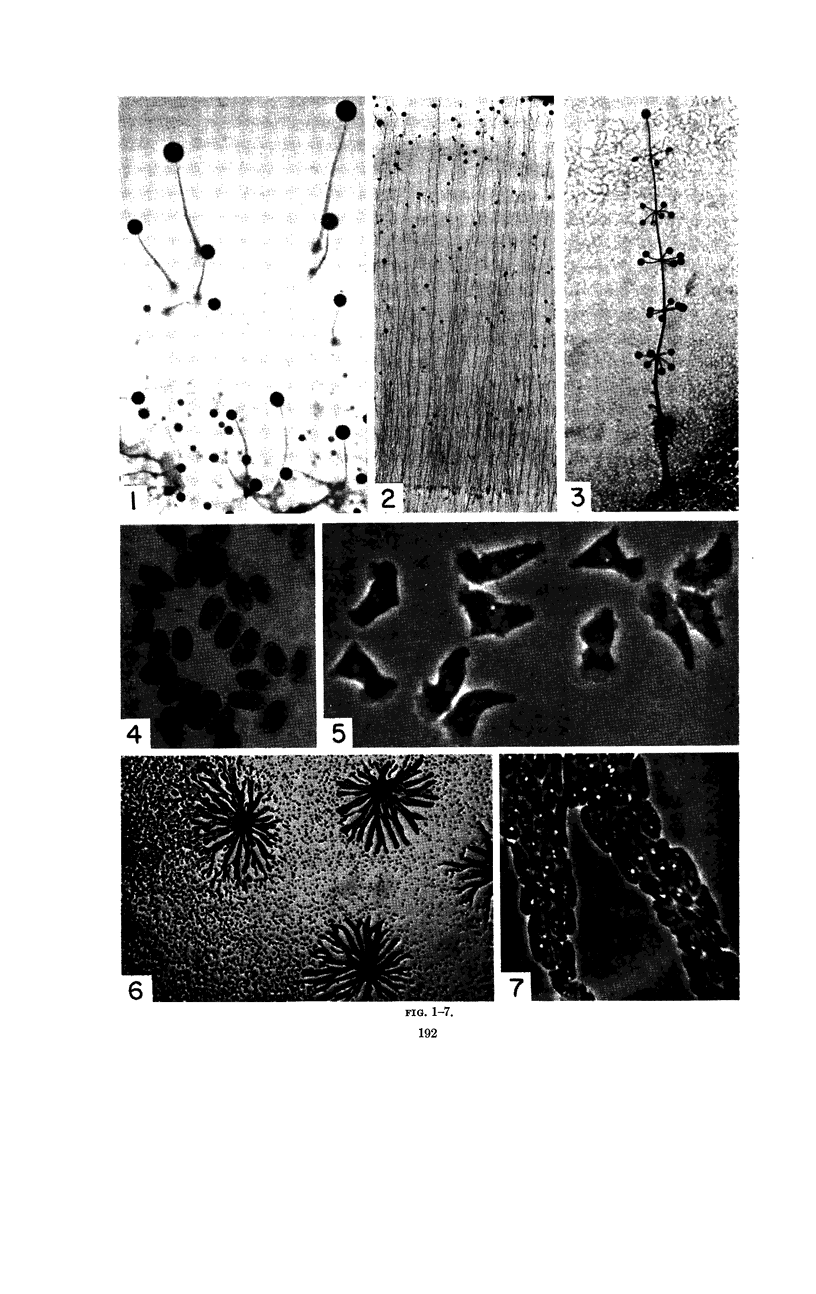
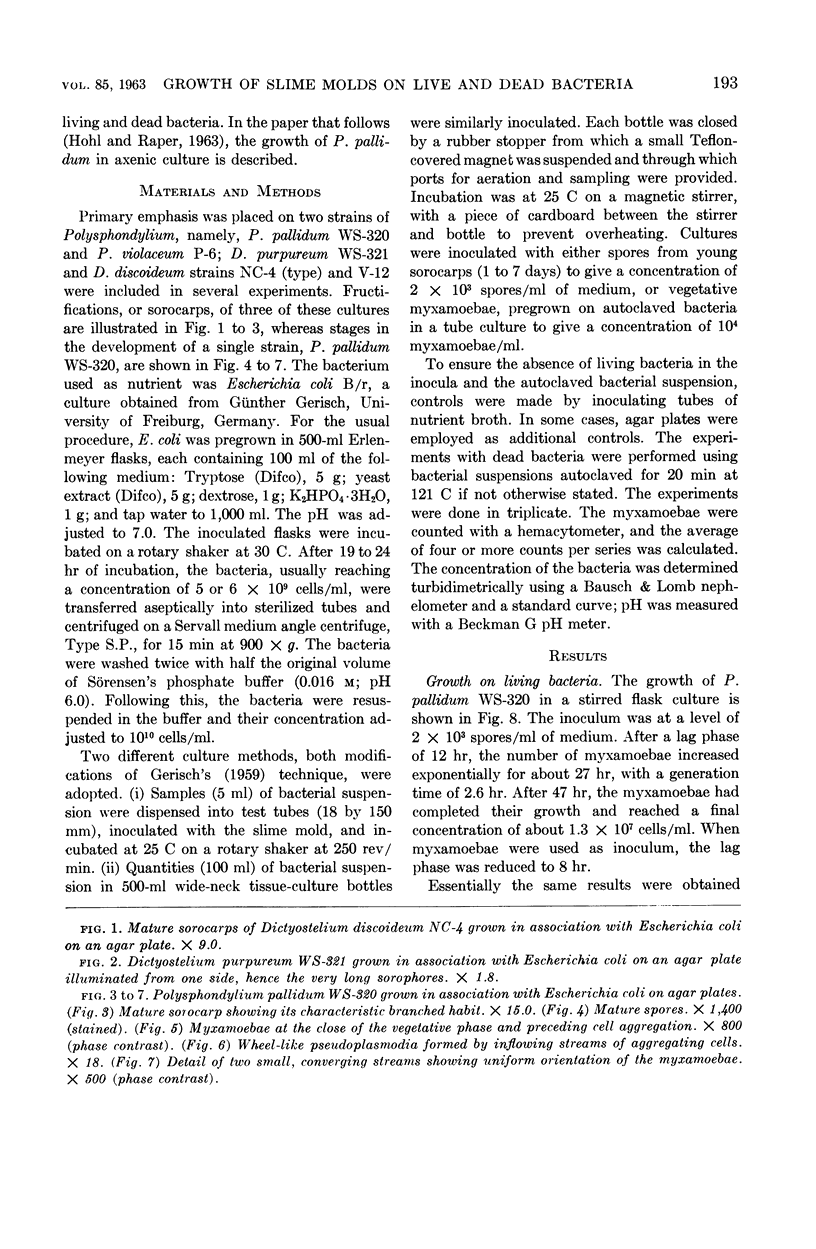
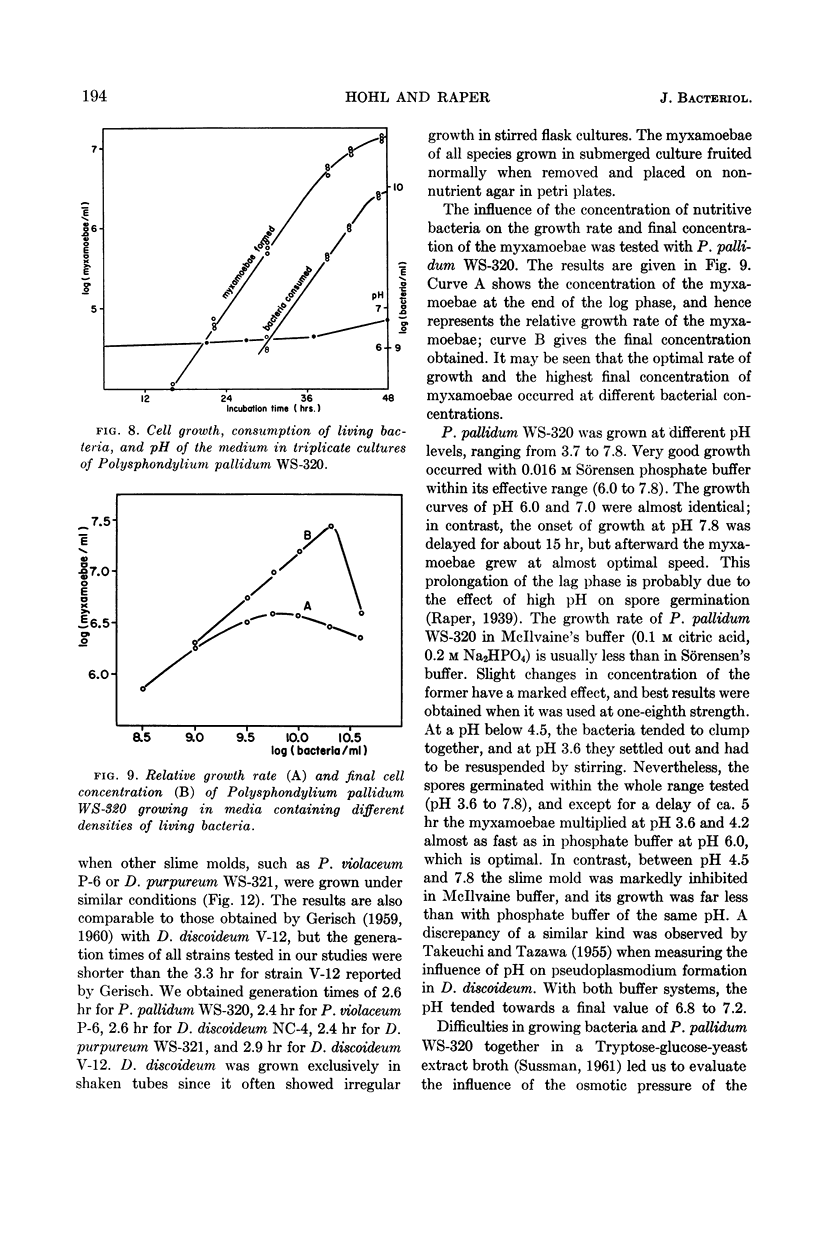
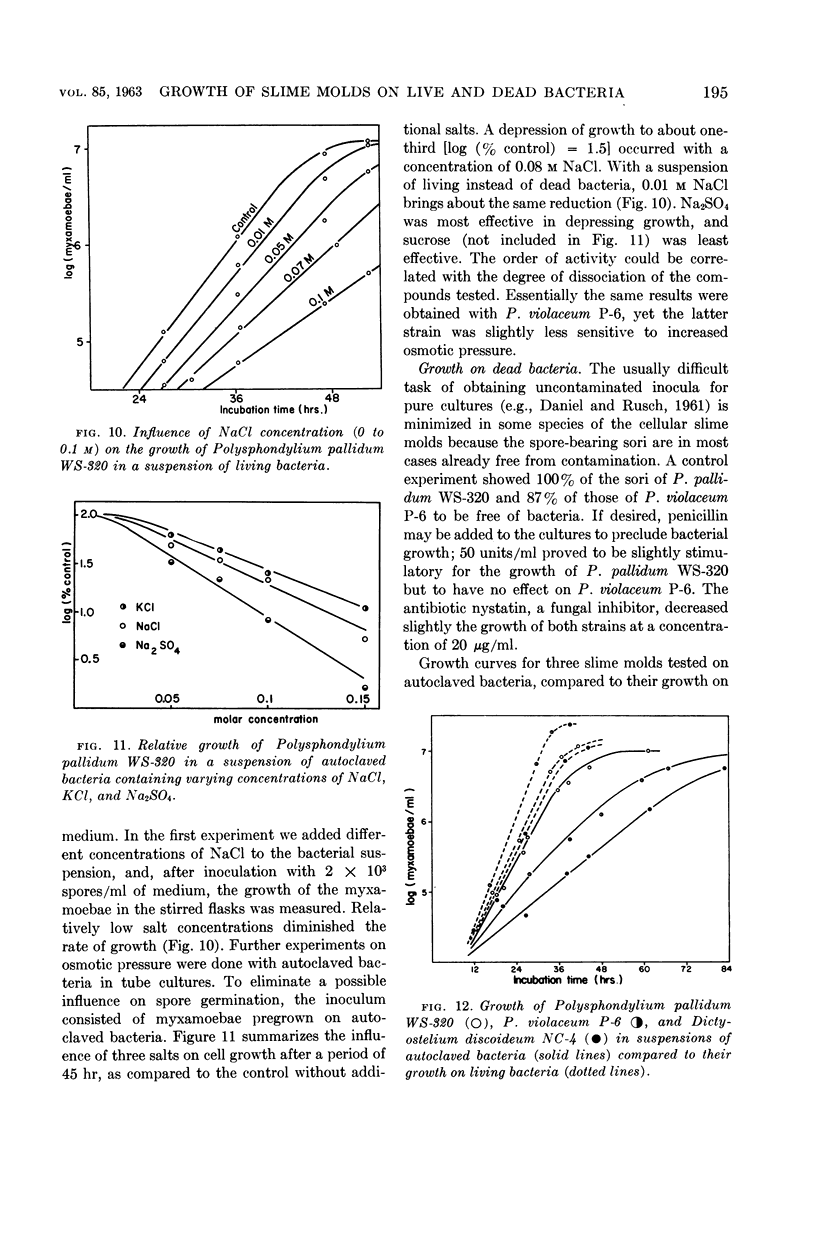

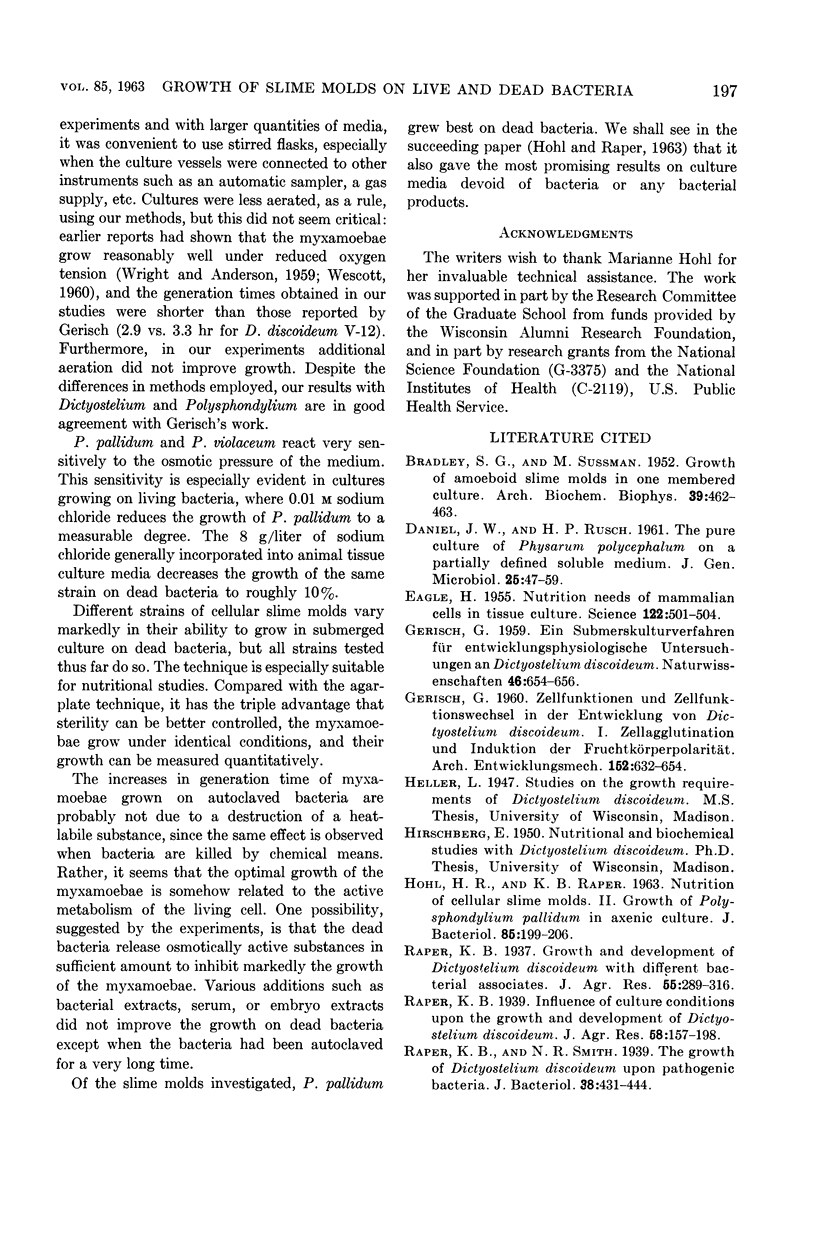
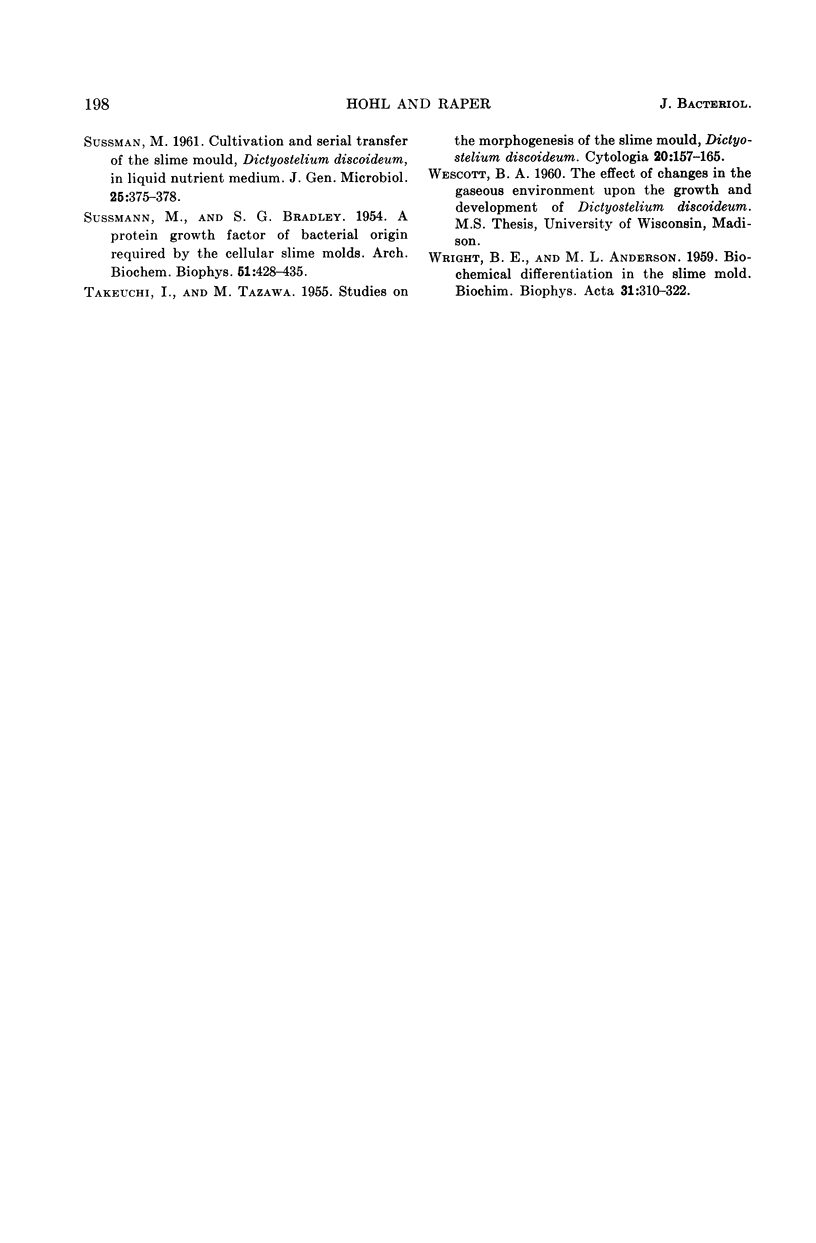
Images in this article
Selected References
These references are in PubMed. This may not be the complete list of references from this article.
- BRADLEY S. G., SUSSMAN M. Growth of ameboid slime molds in one-membered cultures. Arch Biochem Biophys. 1952 Aug;39(2):462–463. doi: 10.1016/0003-9861(52)90356-1. [DOI] [PubMed] [Google Scholar]
- DANIEL J. W., RUSCH H. P. The pure culture of Physarum polycephalum on a partially defined soluble medium. J Gen Microbiol. 1961 May;25:47–59. doi: 10.1099/00221287-25-1-47. [DOI] [PubMed] [Google Scholar]
- EAGLE H. Nutrition needs of mammalian cells in tissue culture. Science. 1955 Sep 16;122(3168):501–514. doi: 10.1126/science.122.3168.501. [DOI] [PubMed] [Google Scholar]
- HOHL H. R., RAPER K. B. Nutrition of cellular slime molds. II. Growth of Polysphondylium pallidum in axenic culture. J Bacteriol. 1963 Jan;85:199–206. doi: 10.1128/jb.85.1.199-206.1963. [DOI] [PMC free article] [PubMed] [Google Scholar]
- Raper K. B., Smith N. R. The Growth of Dictyostelium discoideum upon Pathogenic Bacteria. J Bacteriol. 1939 Oct;38(4):431–445. doi: 10.1128/jb.38.4.431-445.1939. [DOI] [PMC free article] [PubMed] [Google Scholar]
- SUSSMAN M., BRADLEY S. G. A protein growth factor of bacterial origin required by the cellular slime molds. Arch Biochem Biophys. 1954 Aug;51(2):428–435. doi: 10.1016/0003-9861(54)90498-1. [DOI] [PubMed] [Google Scholar]
- WRIGHT B. E., ANDERSON M. L. Biochemical differentiation in the slime mold. Biochim Biophys Acta. 1959 Feb;31(2):310–322. doi: 10.1016/0006-3002(59)90003-4. [DOI] [PubMed] [Google Scholar]



